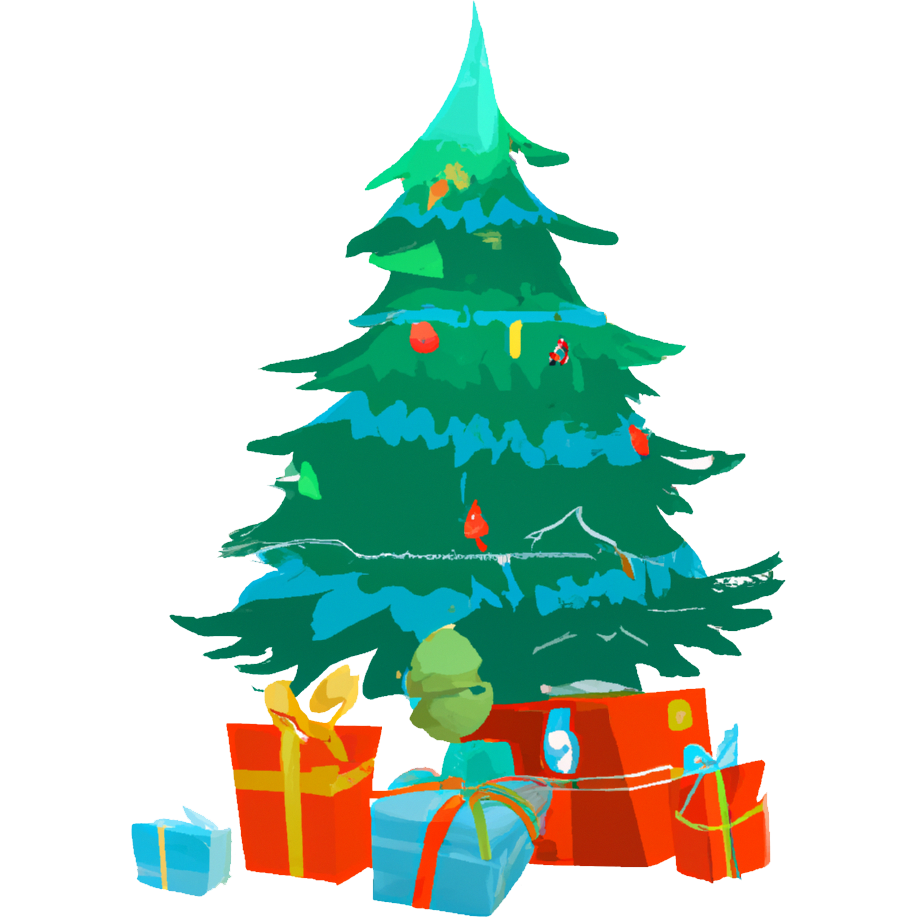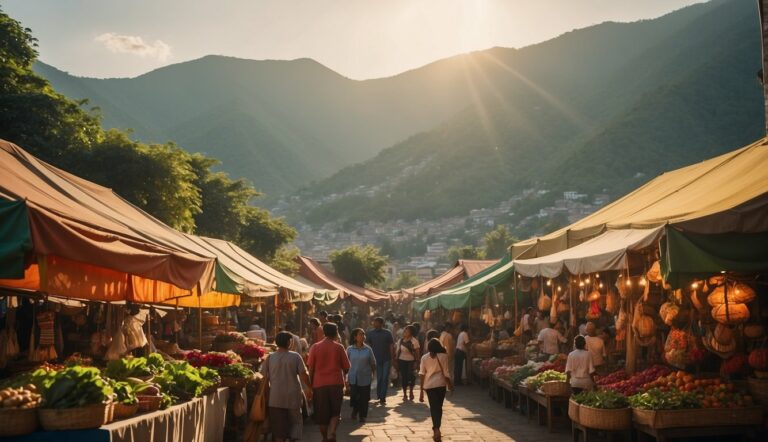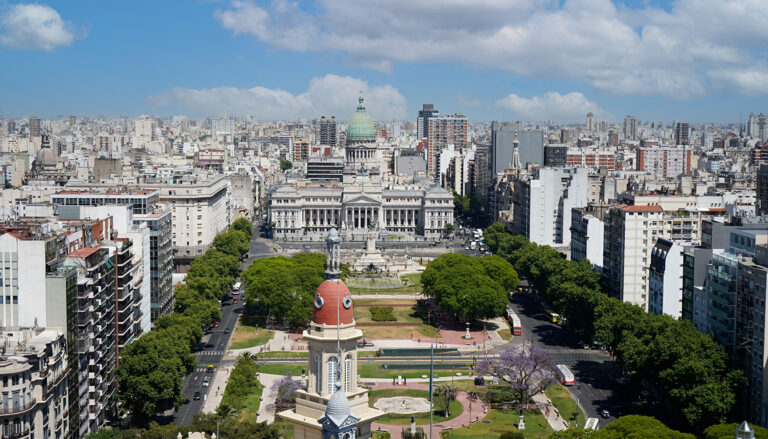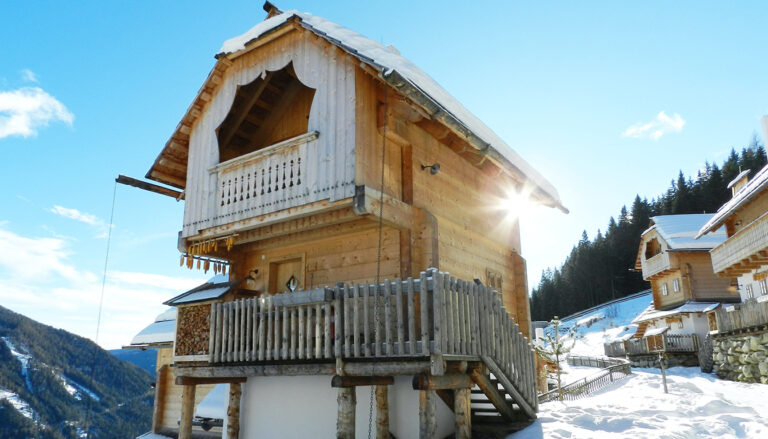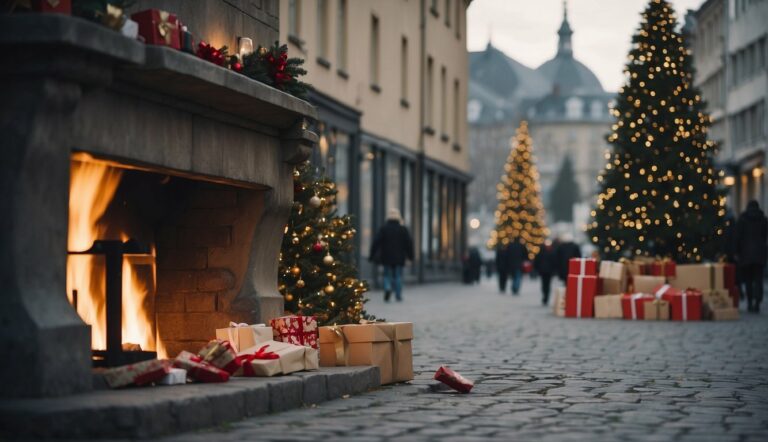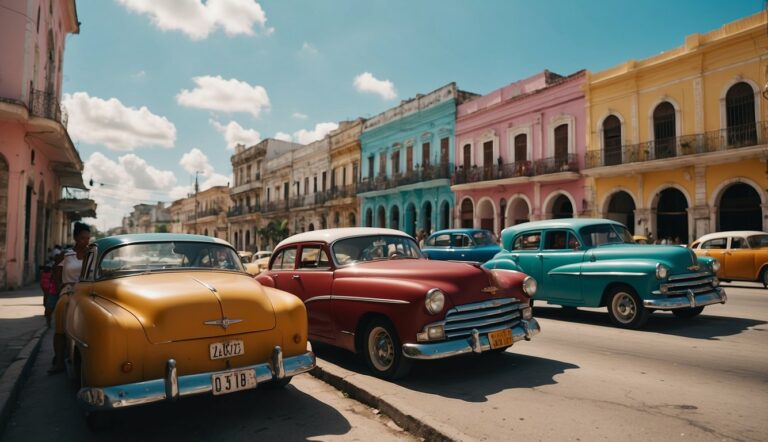Christmas in Denmark: Discover the Enchanting Danish Christmas Traditions
Christmas in Denmark, locally known as Jul, is a time steeped in tradition and heartwarming festivities throughout December.
The celebration kicks off either at the beginning of Advent or on the 1st of December.
Gradually, the festive spirit builds to the pinnacle on December 24th, Christmas Eve. The Danes gather for an elaborate dinner to celebrate Christmas on this day, typically featuring roast duck, roast turkey, roast goose, or pork. These are accompanied by side dishes such as red cabbage and caramelized potatoes.
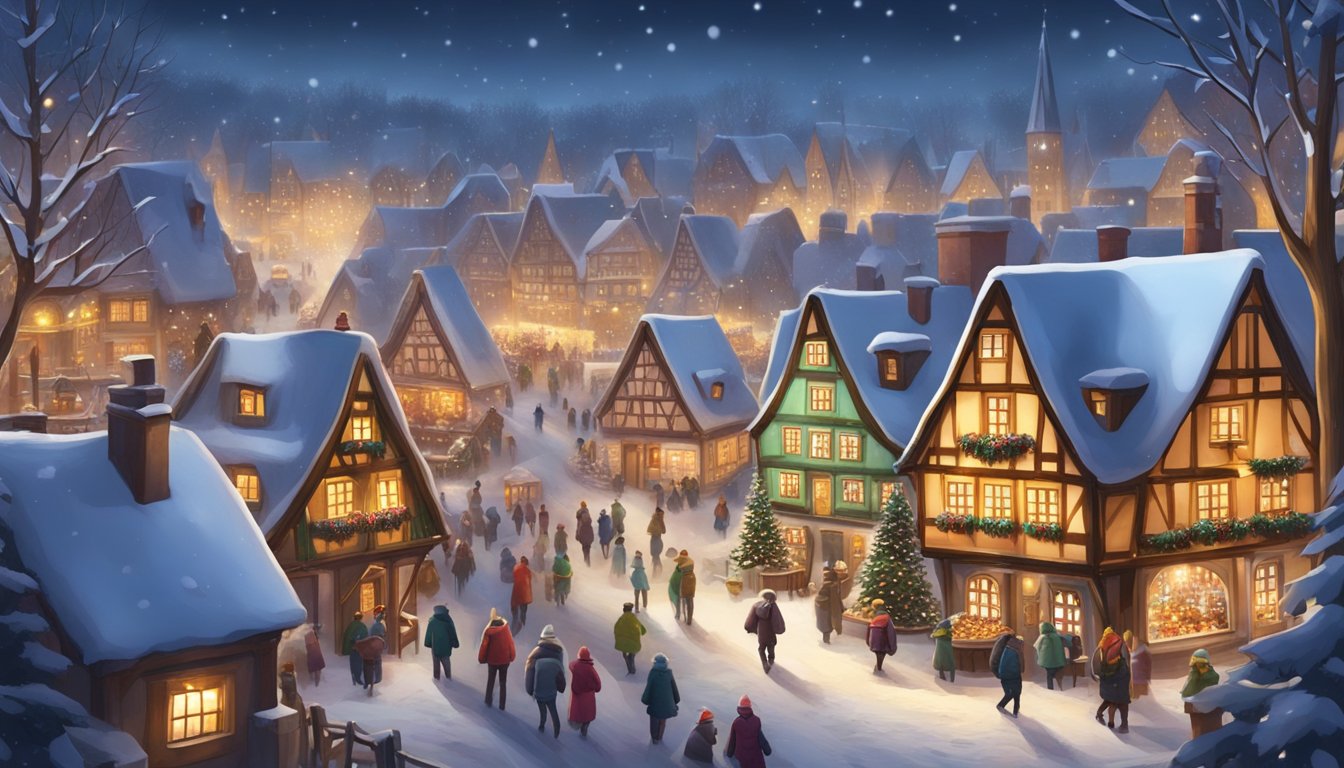
The holiday season in Denmark is characterized by a unique blend of old pagan customs and modern practices that create a festive, vibrant atmosphere.
Homes are decorated with garlands, lights, and the iconic Danish Christmas tree, Juletræet, often with real candles being placed upon it.
The scent of mulled wine and carolling fill the air, inviting both locals and visitors into the celebratory spirit of Danish Jul.
Danish Christmas traditions are cherished. Amongst these traditions, families and friends enjoy their time together, and gifts are exchanged after the Christmas Eve dinner.
Children anticipate the arrival of Julemanden, the Danish version of Santa Claus, with excitement.
The Danish testament to the holiday spirit is evident in the joyous customs and the communal anticipation of the festive season, making Jul in Denmark a charming and unique experience.
Cultural Significance of Christmas
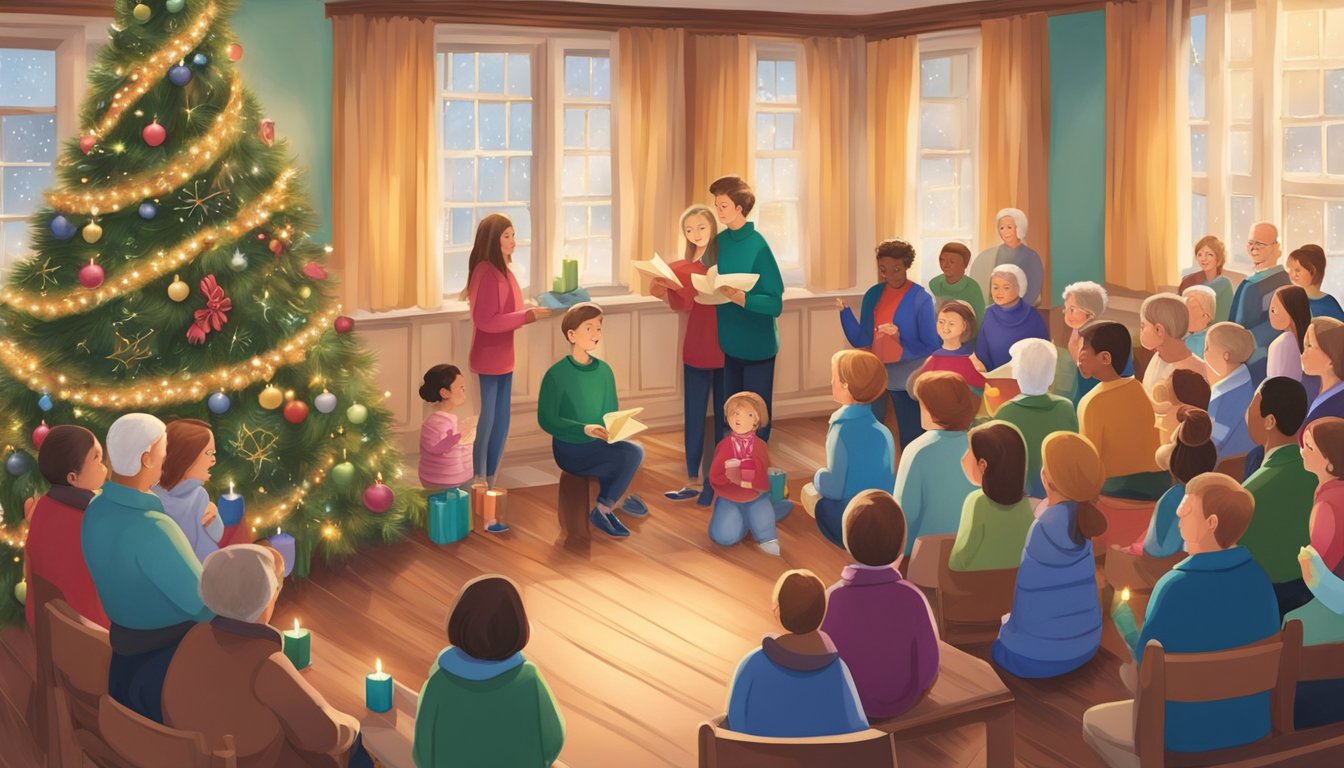
In Denmark, Christmas, known as “Jul,” is a time steeped in historical significance and characterized by a distinct aesthetic of cosiness known as “hygge.” This festive season reflects a blend of traditions unique to Danish culture, deeply rooted in Scandinavia.
Historical Roots of Jul
Jul in Denmark has origins that predate Christianity, drawing from ancient Midwinter festivals commonly celebrated across Scandinavia.
With the spread of Christianity, these pagan traditions merged with Christian beliefs, leading to the contemporary celebration of Christmas.
Today, Danish Christmas traditions mirror this blend, with Jul taking on cultural and religious significance within the community.
Hygge and Danish Christmas Aesthetics
The concept of hygge, an integral part of Danish culture, becomes pronounced during Christmas.
This encompasses an ambience of warmth, friendliness, and simplicity.
The Danish deck their homes with candles, evergreens, and hearts made of red and white paper, creating a visual aesthetic that embodies hygge and augments the festive spirit.
Traditional Danish Christmas decorations often include:
- Candles and lights to illuminate homes during long winter nights
- Handcrafted paper ornaments, symbolic of artisanal heritage
As Christmas Eve approaches, these elements not only adorn Danish homes but also serve as a reminder of the importance of togetherness and joyful serenity during Jul.
Festivities and Activities
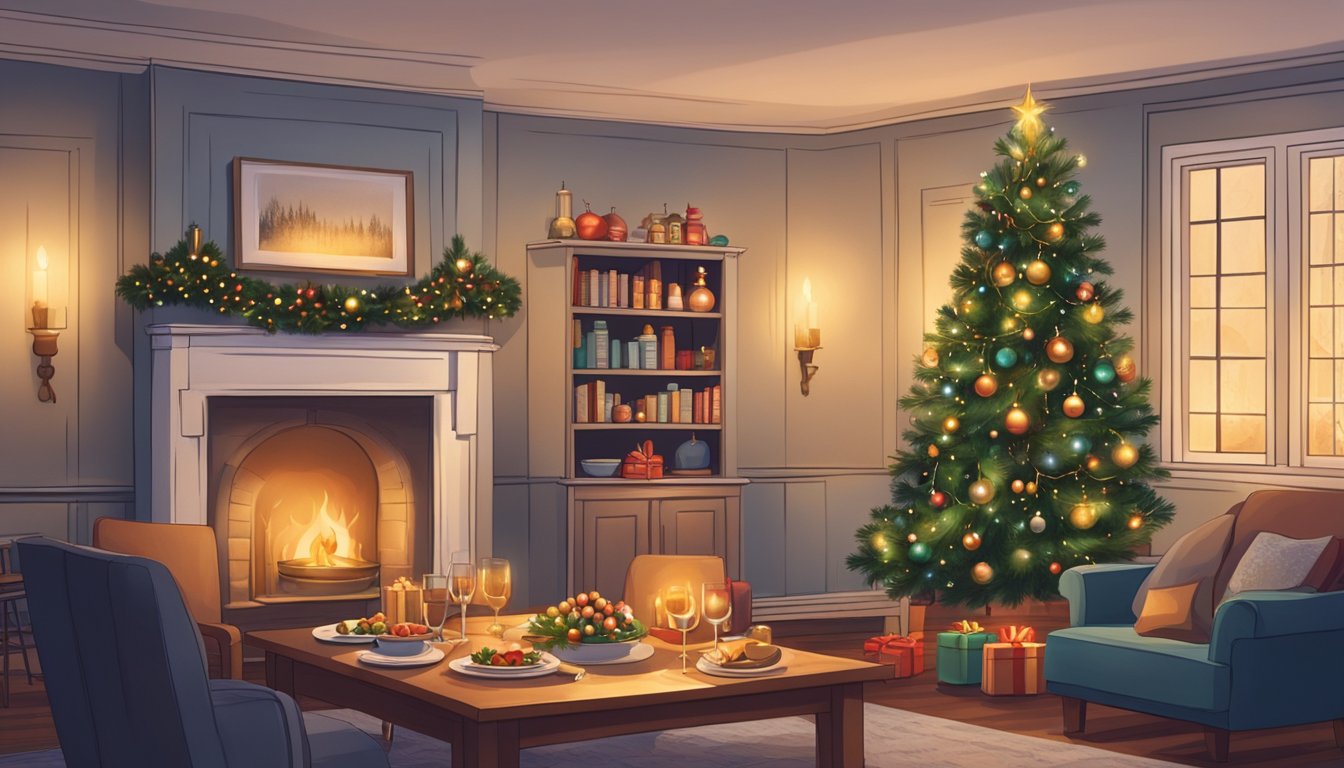
The celebration of Christmas in Denmark materializes through vibrant markets, legendary amusement parks, intricately designed decorations, and serene candlelit church services. These events capture the essence of Danish yuletide joy and tradition.
Christmas Markets and Tivoli Gardens
Christmas Markets are a quintessential element of the Danish holiday season.
Visitors can browse a variety of stalls offering crafted goods, seasonal treats, and warm beverages.
Tivoli Gardens, particularly, comes to life with its spectacular light shows and festive decorations.
As the oldest amusement park in the world, Tivoli Gardens transforms into a winter wonderland with numerous rides and games, embodying the magical atmosphere of Christmas.
Danish Christmas Decorations
Danish Christmas decorations are steeped in tradition and often blend modern and historical motifs.
Visitors will find Danish homes adorned with handcrafted Real Candles and intricately designed Christmas Decorations.
A highly anticipated event is visiting the flagship store of Royal Copenhagen to witness their famous “Copenhagen Christmas Tables,” beautifully decorated by local celebrities and artists.
Candlelit Christmas Services
The serene ambience in which Christmas is celebrated is also captured through the Candlelit Christmas Services held in churches throughout the country.
These services are an integral part of the holiday, featuring processions, choir performances, and the warm glow of candles, creating a tranquil and reflective experience.
The community comes together in churches, ranging from grand cathedrals to local chapels, to partake in the festive spirit.
Traditional Danish Christmas Foods
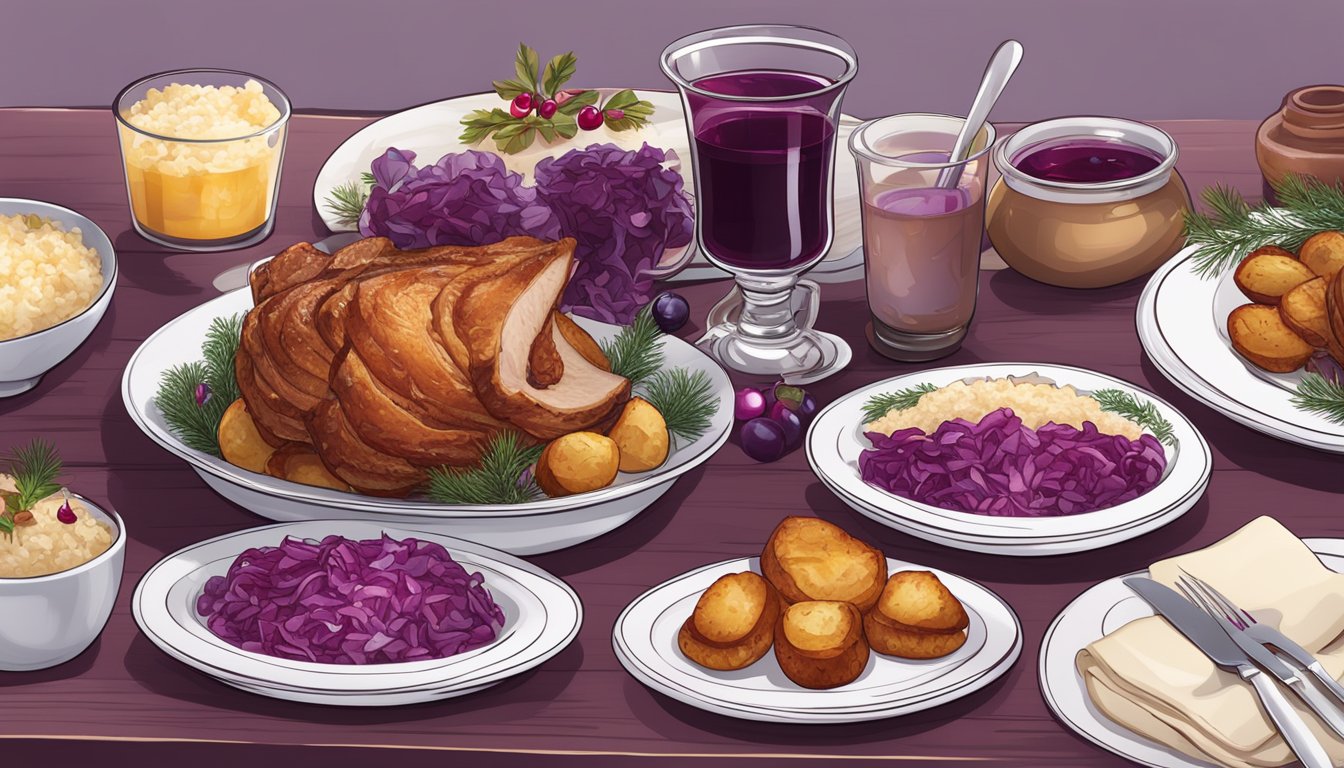
In Denmark, the Christmas season is a time for indulging in a variety of traditional foods, with a particular emphasis on the Christmas Eve dinner, which features rich and hearty dishes. Sweet desserts and special treats are also a cornerstone of the festive culinary experience.
Christmas Eve Dinner
The mainstay of the Danish Christmas Eve Dinner is typically a roast, which can be duck, goose, or pork, known as Flæskesteg. These roasts are the centrepieces of the dinner table:
- Roast Duck: Often stuffed with apples and prunes to enhance flavour and juiciness.
- Roast Pork (Flæskesteg): Recognized by its crispy crackling skin.
- Roast Goose: Another popular choice, also stuffed with apples and prunes.
Common accompaniments include:
- Caramelized Potatoes: Small potatoes glazed in a sugar and butter caramel.
- Red Cabbage: Usually served cooked with a touch of sugar and vinegar.
- Gravy: For drizzling over the various components of the meal.
Special Christmas Desserts
Risalamande, a rich rice pudding made with whipped cream, vanilla, and chopped almonds, is a quintessential Danish Christmas dessert.
A warm cherry sauce often accompanies it, and a fun tradition involves hiding a whole almond in the pudding. The lucky finder of the almond is typically awarded a small prize.
Christmas Treats and Beverages
Apart from dessert, the Danes enjoy a variety of Christmas Treats and Beverages:
- Æbleskiver: Spherical pancakes served with powdered sugar and jam are often enjoyed during Christmas.
- Pebernødder and Brunkager: These small spiced cookies are a Christmas staple and are perfect for snacking during the holiday.
- Marzipan Pig: A confectionery made from marzipan given as a prize for finding the almond in the Risalamande.
- Chocolate: Various forms of chocolate are also popular during the festivities.
For beverages, it’s common to have mulled wine called gløgg, often infused with spices and served with almonds and raisins at julefrokost, the Danish Christmas lunch.
Customs and Traditions

Danish Christmas customs intertwine a rich tapestry of cultural history with contemporary celebrations. The joyous season in Denmark is marked by distinctive traditions ranging from the candles of Advent to the whimsical tales of Nisse.
Advent and Calendar Customs
Advent is an integral part of the Christmas season in Denmark, serving as a period of anticipation leading up to Christmas. It traditionally begins on the fourth Sunday before December 24th.
A cherished tradition is the use of Advent calendars, which date back to the 19th century. Often, these are handmade and can contain little gifts or chocolate that are revealed daily.
Christmas Tree and Decorations
The Christmas Tree is a central element in Danish Yuletide festivities. Usually an evergreen tree, it is adorned with lights, ornaments, and the distinctive Danish decoration known as Julehjerte, or woven heart baskets.
Homes are decorated with a blend of modern and traditional decor, including candles, sprigs of green, and handcrafted items. The singing of Christmas Hymns is also common as families gather to decorate the tree.
Gift-Giving and Nisse
Gift-giving occurs on Christmas Eve in Denmark, following a sumptuous dinner. The gifts are often thoughtfully selected and rich in personal significance.
Nisse, these mythological creatures, akin to elves or Santa, are said to bring gifts to well-behaved children. They are a beloved part of the holiday season, represented in stories and decorations throughout Danish homes.
Social and Family Gatherings
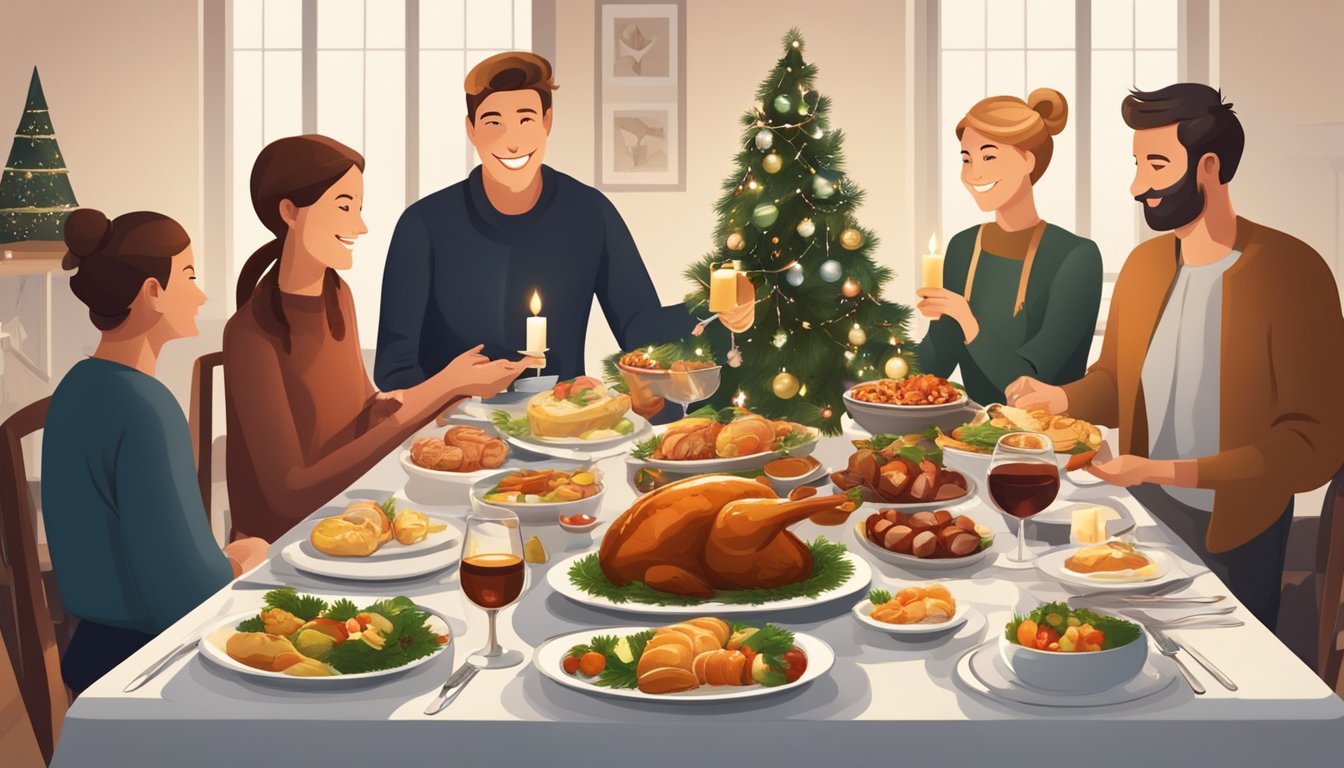
In Denmark, Christmas, or “Jul” as it’s called in Danish, is a time characterized by warmth and communal spirit. The season is anchored by cherished traditions within the home and the joy of public festivities.
Jul in the Danish Home
In the privacy of Danish homes, families gather on Christmas Eve, which holds a greater significance than Christmas Day itself.
The evening is often the pinnacle of Christmas celebrations in Denmark, with a traditional feast that brings families together.
It’s common for families across cities like Copenhagen, Aarhus, Odense, Ribe, and Nyborg to enjoy a meal consisting of roast duck or pork, complemented by potatoes, red cabbage, and gravy.
After dinner, families often follow the Danish tradition of dancing around the Christmas tree while singing Christmas carols before opening presents.
Public and Community Celebrations
Danish towns and cities come alive outside the home with festive Christmas Parties and Holiday spirit.
Public celebrations include Christmas markets, which can be found in cities such as Copenhagen and Aarhus, offering a variety of unique crafts and Danish holiday treats.
Community gatherings also involve lighting ceremonies, illuminating the streets by thousands of twinkling lights, creating a magical atmosphere.
Christmas concerts and church services are widespread, reflecting the season’s communal nature where friends and family unite in celebration.
Frequently Asked Questions

How is Christmas celebrated in Denmark?
In Denmark, Christmas is primarily celebrated on December 24, Christmas Eve.
Families gather to enjoy a festive Christmas dinner and then proceed to open presents, often extending late into the night.
The season is embraced with warmth, marked by a festive atmosphere.
What are some traditional Danish Christmas foods?
The traditional Danish Christmas feast includes roast duck, turkey, goose, or pork paired with cabbage dolmers, medister sausage, red cabbage, kale, and browned potatoes, creating a rich and flavor-packed experience.
What unique Christmas traditions are observed in Denmark?
Unique to Denmark is the St Lucia celebration on December 13, where families participate in candle-lit processions led by a girl dressed as St Lucia.
The season also begins with Advent, featuring the lighting of candles on an advent wreath each Sunday before Christmas.
Can you explain Christmas Hygge and its significance in Denmark?
Hygge, a concept synonymous with coziness and contentment, is significant during the Danish Christmas.
It embodies the essence of creating a warm, inviting atmosphere through simple pleasures like lighting candles, sharing meals, and spending time with loved ones.
What is the name of Santa Claus in Danish culture?
In Danish culture, Santa Claus is known as ‘Julemanden,’ which translates to ‘The Christmas Man.’ He is the bringer of gifts and joy during the festive season.
What are some popular Christmas markets in Denmark?
Denmark boasts several popular Christmas markets. Copenhagen’s Tivoli Gardens and the Old Town of Aarhus are notable for their festive ambience, hand-crafted gifts, traditional foods, and heartwarming decorations.
